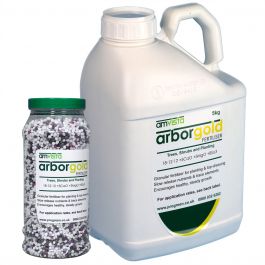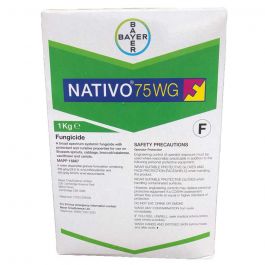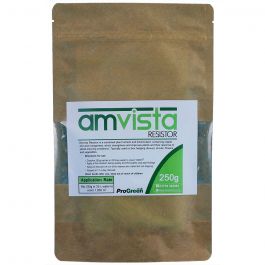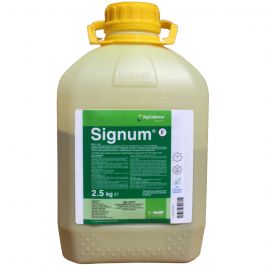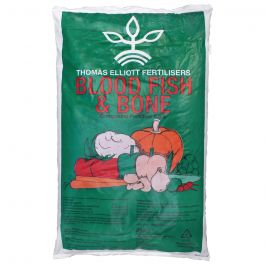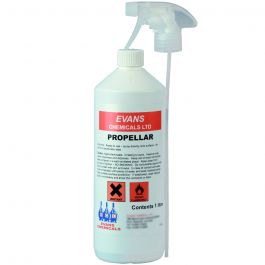Box Blight Treatment
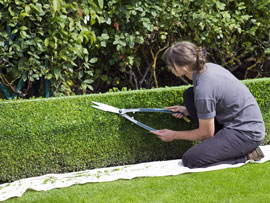
Page Contents:
- What is Box Blight?
- How to Treat Box Blight?
- More Facts!
- Frequently Asked Questions
- Products for Box Blight Treatment
What is Box Blight?
Box blight is a fast-spreading fungal disease that kills topiary and hedges containing varieties of Buxus (known as ‘Box’) within a season.
Box blight is actually one or a combination of these two separate fungal diseases:
Cylindrocladium:
Usually starts as dark fungal spore infection – leaves black spots or dark bare twigs
Volutella:
Leaves turn brown and wither but stay fixed to the plant

Image rights: Wikimedia Commons License
Fungal pathogens, or disease spores, can take only a matter of hours to infect leaves. Disease is spread by wind and rain-splash and also carried on infected garden tools.
How To Treat Box Blight
An integrated approach is best for combatting box blight. Reliance on one method of control can easily lead to disease resistance forming and disappointing results. Once a leaf or branch has died it cannot be brought back to life, therefore prevention and early intervention will yield the best outcome.
A fully integrated approach for Box Blight control should include:
-
Fungicides
Products such as Signum and Nativo 75WG give good results on box blight with protectant and curative properties. Application rate, timing and correct product selection is key to delivering the best results. These fungicides are approved under an “Extension of Authorisation for Minor Use”, which is a different method of approval requiring some documentation for the applications to be compliant and legal. We can assist customers with the appropriate advice.
-
Biostimulants
This type of product works differently to a fungicide, but stimulates a plant to withstand and recover from disease infection. Biostimulants can also reduce the reliance on traditional fungicides, reducing the risk of disease resistance forming. Our most popular product in the sector is Amvistor Resistor and is commonly used in programmes with the above fungicides.
-
Fertilisers
- Granular Fertiliser - ensuring box hedging has the correct macro nutrition will aid recover of damaged plants. Our classic tree and shrub fertiliser Arbor Gold is a once per season application (typically Spring), delivering the correct balance of nutrients for hedging in a slow release form.
- Foliar Seaweed - in season applications of seaweeds and trace elements will ensure a hedge has the full complement of nutrients to speed up damage recovery and minimise in-season growing stress. Products in this category include Phyter, Maxicrop Original & Amvista L9 Seaweed. For ease of applications, these products can be safely tank-mixed with our approved fungicide, bio-stimulant and caterpillar suggestion (below).
-
Minimising Disease Spread
Good hygiene is paramount. Any equipment that contacts a hedge should be disinfected prior to use. This includes secateurs, shears and powered hedge trimmers. Our popular arboricultural disinfectant is Propellar, available in 1Lt ready to use bottles or larger 5 litre containers.
-
Other Pests
Once a growers has invested in a programme to recover from box blight, it is imperative the hedge does not suffer from further setbacks. One common issue that can be encountered is damage from Box Caterpillar. This pest can decimate the foliage of a hedge, reducing the chances of recovery from box blight.
This issue can be avoided by the inclusion of an inexpensive, natural and highly effective biological caterpillar control product. Bruco fits the category perfectly and will mix with any of our supported fungicide and bio-stimulant treatments
More Facts!
- Damp and blustery periods of weather are very conducive to disease spread and it can infect at any time of the year throughout most of the UK.
- Mild winters have extended to traditional box blight season.
- Collect fallen leaves from all plant species in the vicinity regularly and remove dead plants – then burn... DO NOT compost.
- Water during dry weather using drip tubes rather than spraying the foliage. Alternatively, you could soak the soil (not foliage) once a week rather than sprinkling multiple times a week.
- Some varieties of Buxus seem to withstand infection better than others. Unfortunately, the most popular variety, Buxus sempervirens 'Suffruticosa', seems to be the most susceptible to disease.
- Newly purchased plants (Buxus or otherwise) should never be planted straight away near box to reduce the importation of infection. Keep new plants in ‘quarantine’ for a short period to observe any signs of disease development.
Frequently Asked Questions
What does box look like?
When your box plants have box blight, you will see that your leaves have gone brown and begin to fall off. Other symptoms you might spot are black or striped stems.
How to avoid box blight?
You can avoid box blight by ensuring your plants are not overcrowded and have a good circulation of air. Warm and damp conditions are a way in which box blight can set in.

